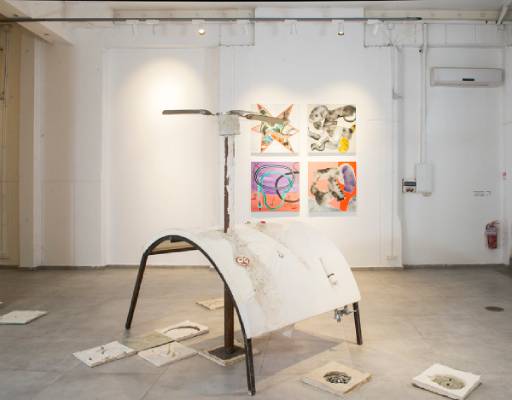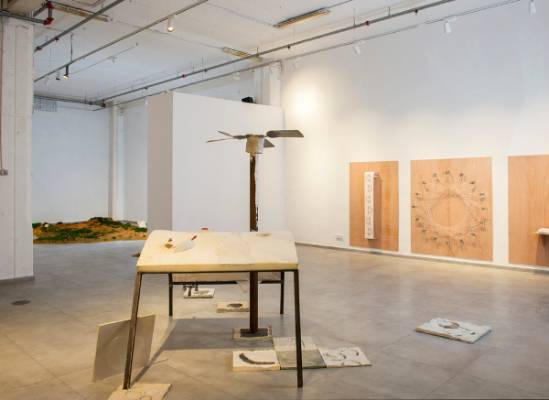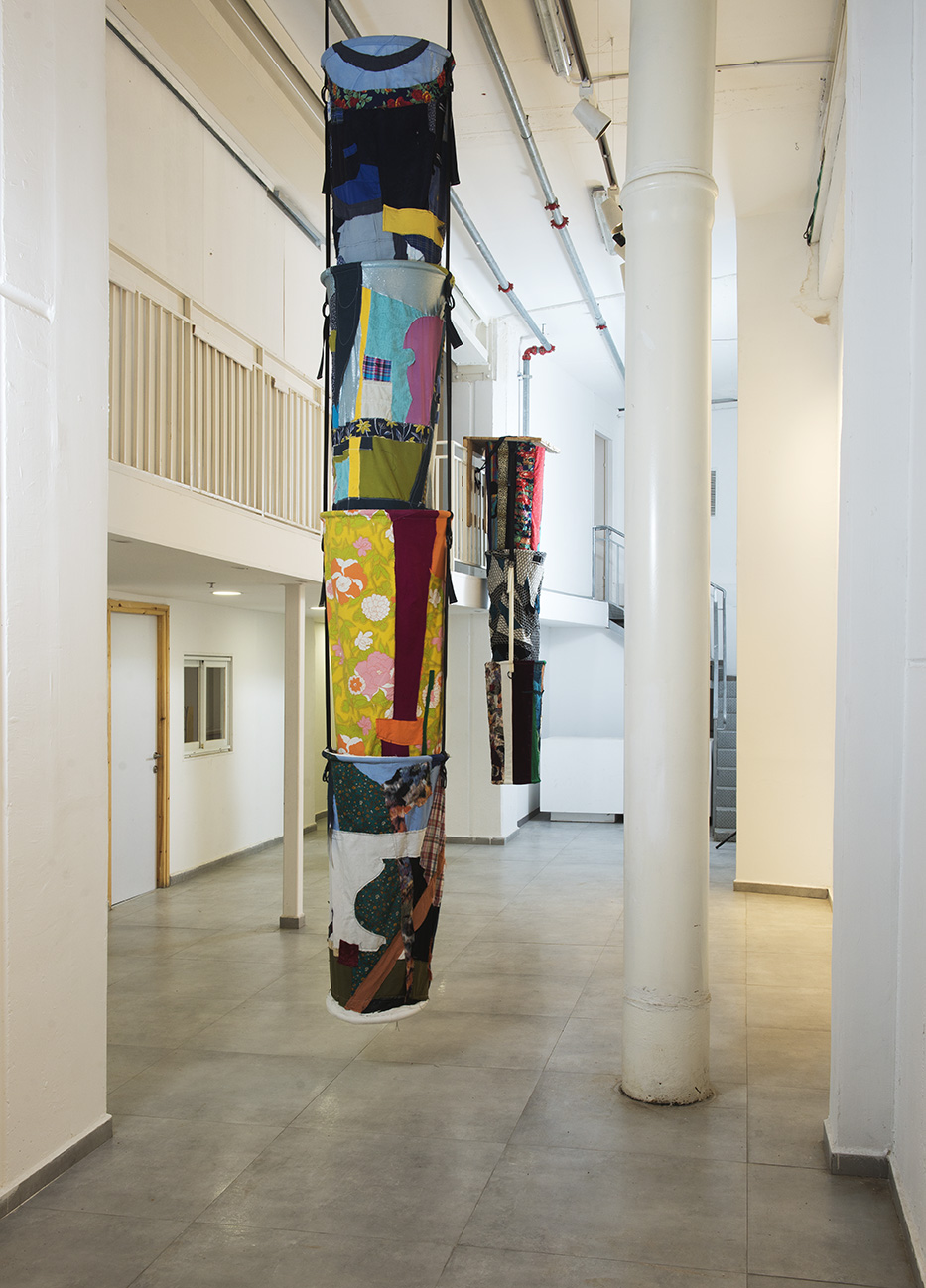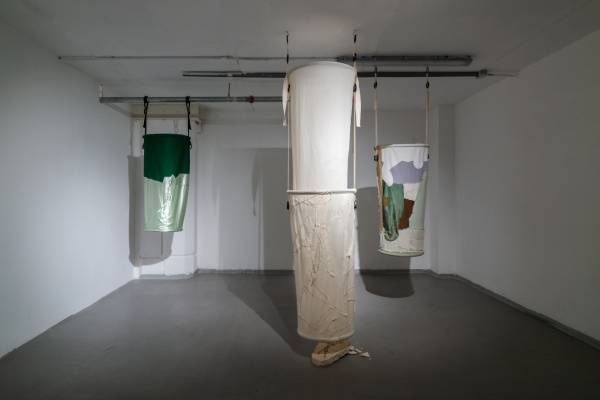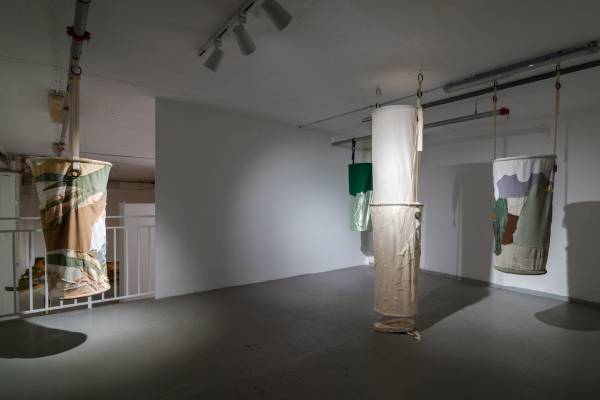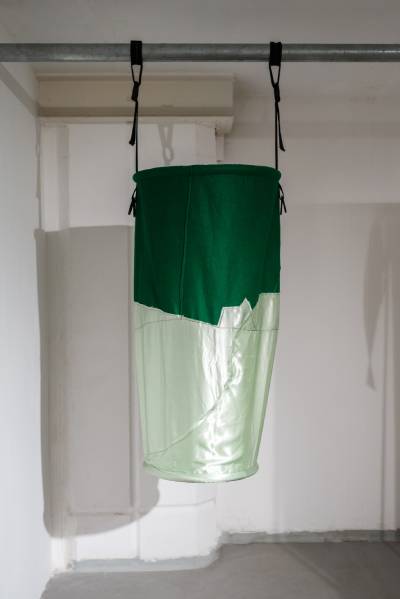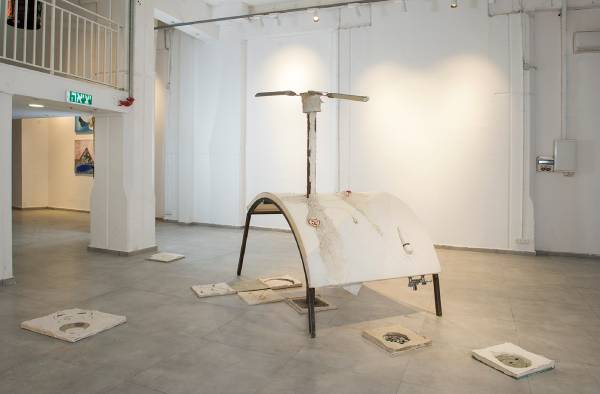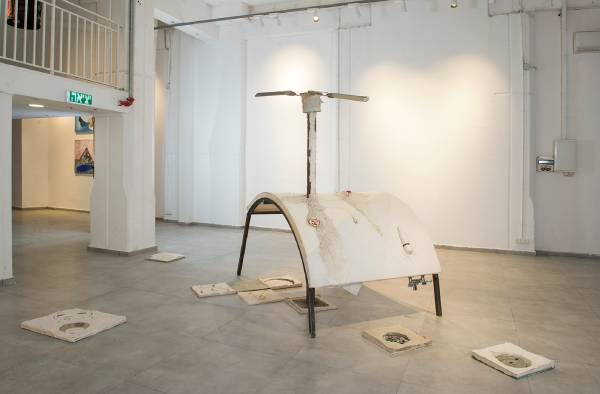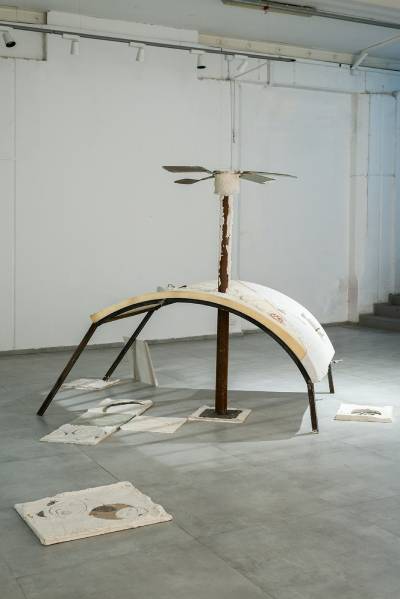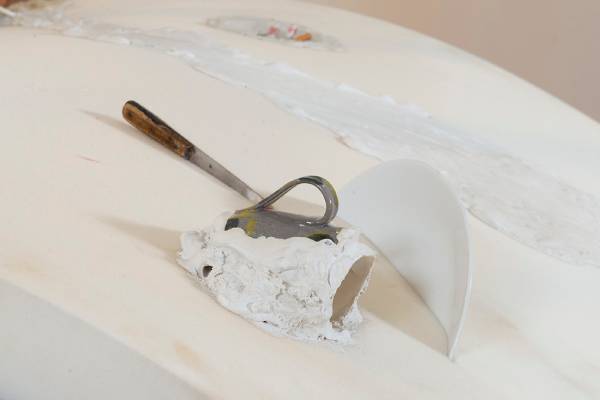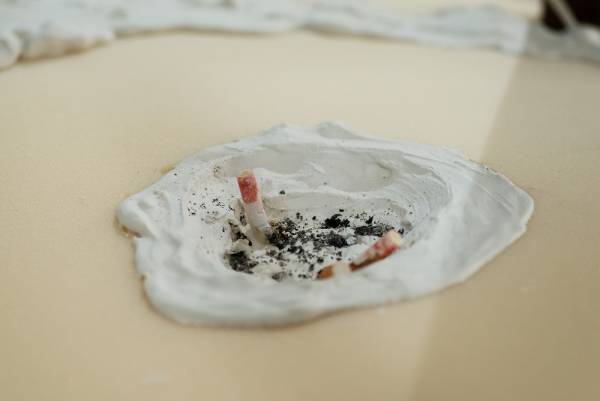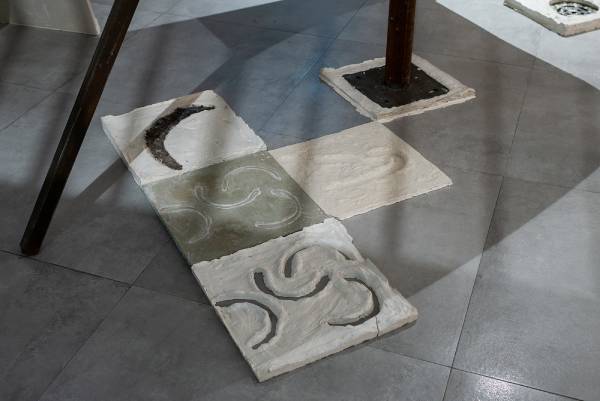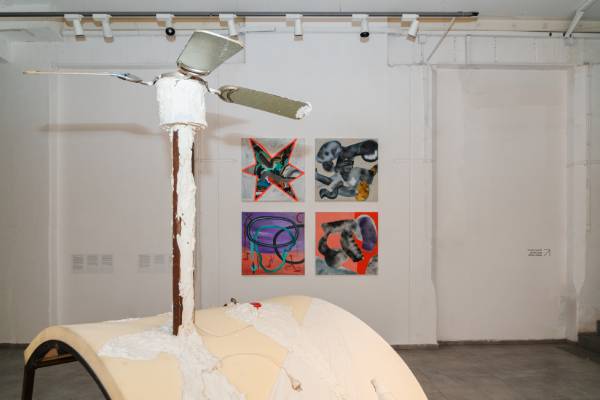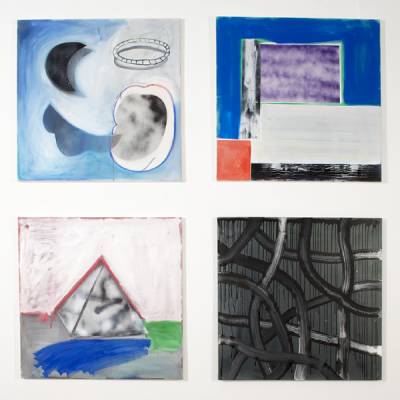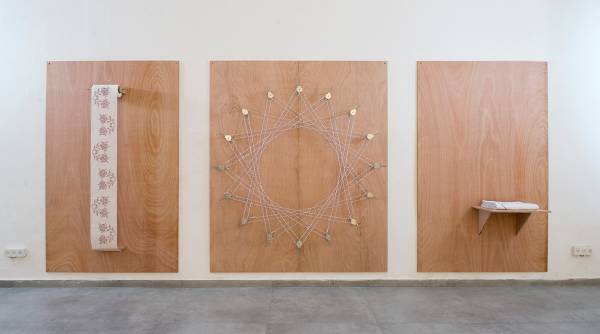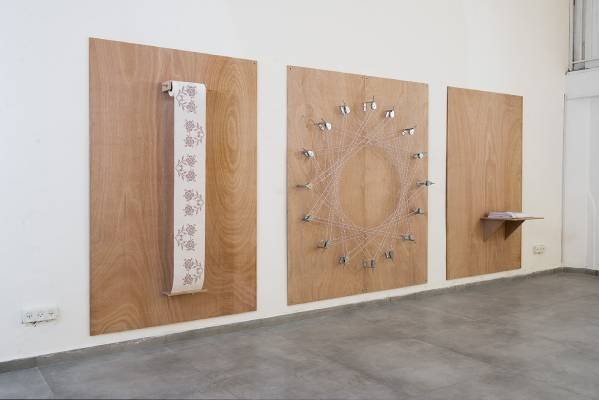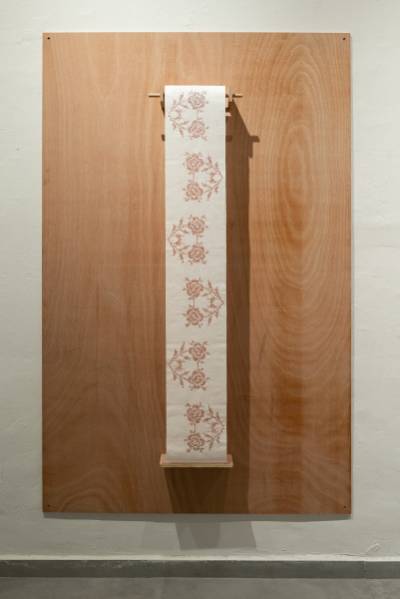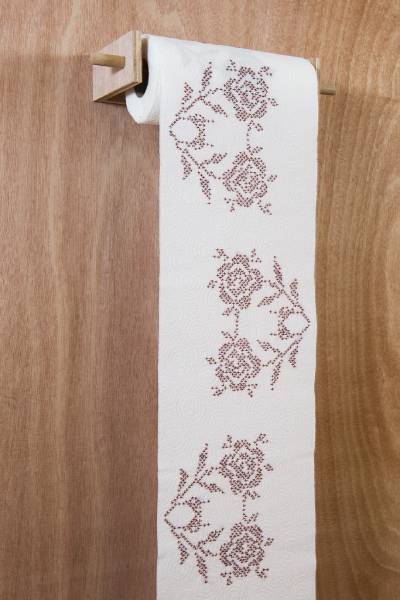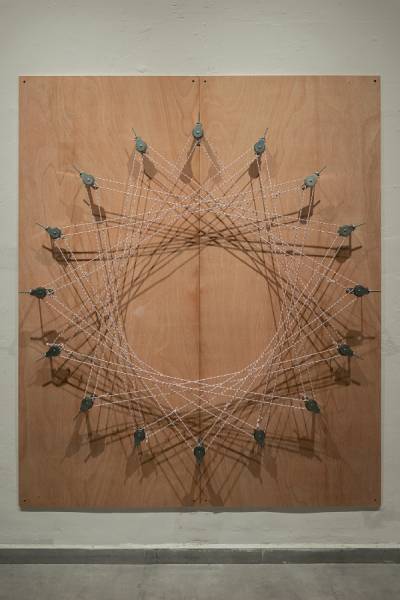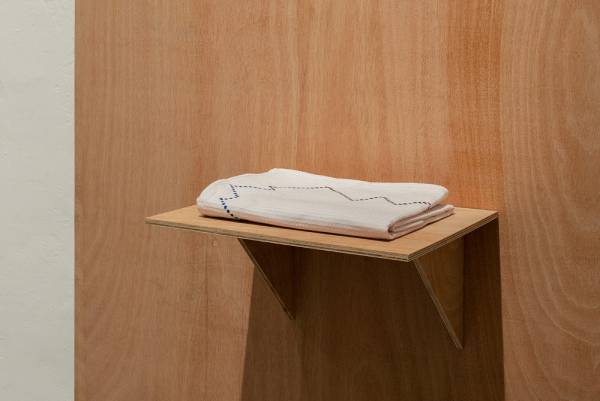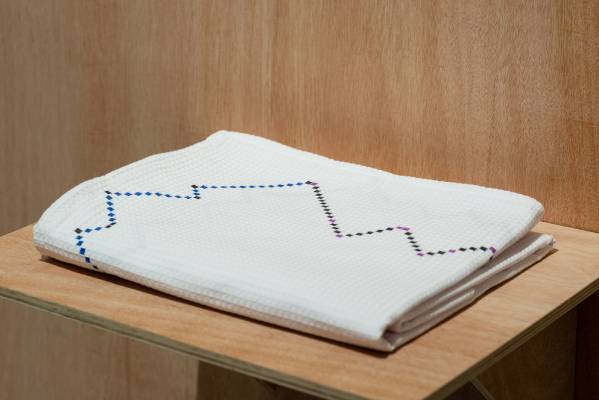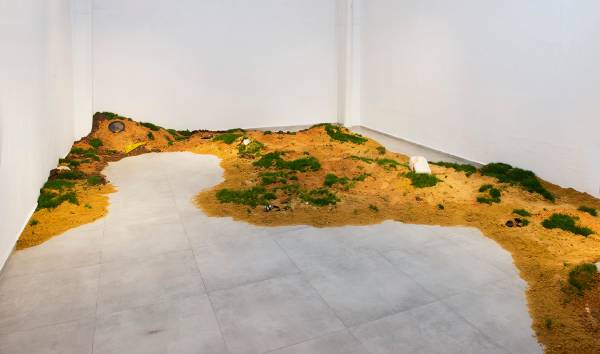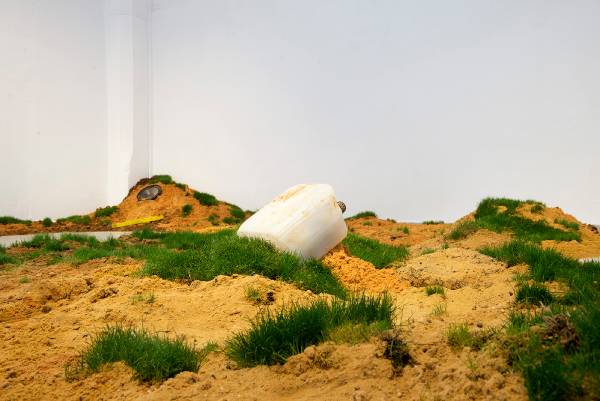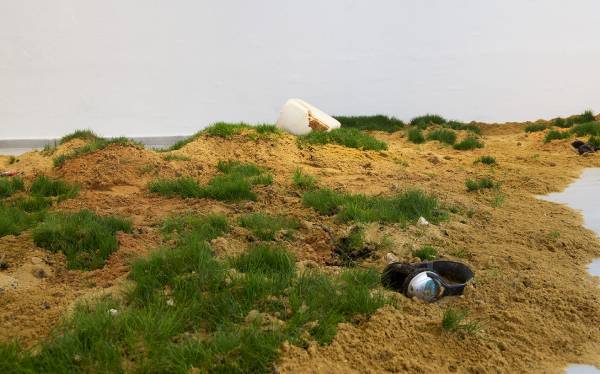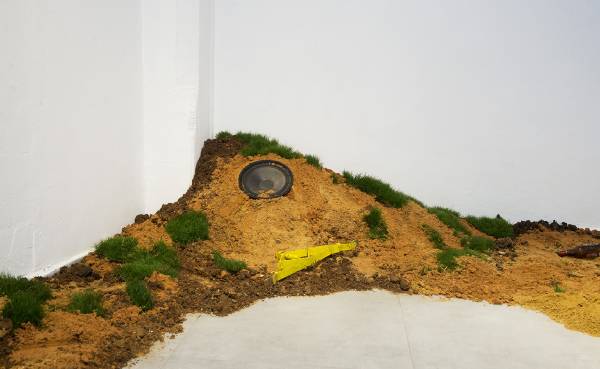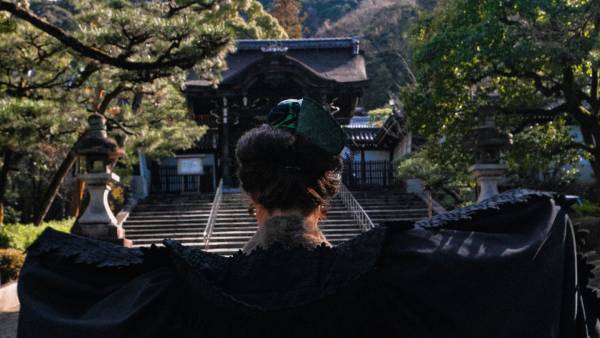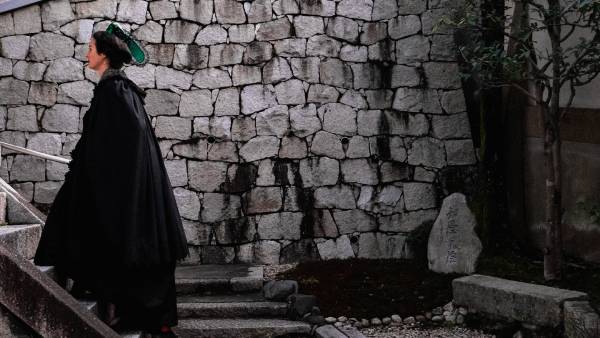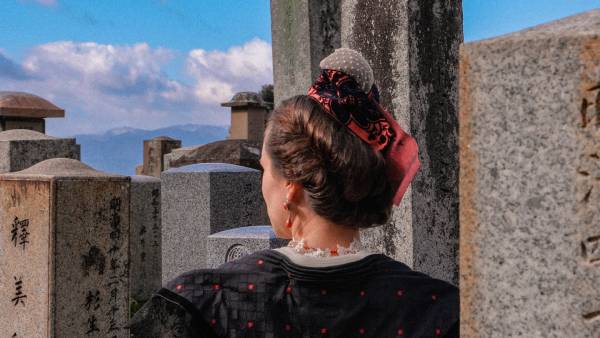Bikurim 3
Alona, Chamutal Bar Cohen, Ran Bensimon, Bar Eran, Idit Gilad, David Rosenberg
January 7 – February 28, 2022
The New Gallery Teddy, Jerusalem
Bikkurim 3 presents new works by six young artists who are recent graduates of art schools in Jerusalem and who live and work in the city. On display are works in various mediums such as painting, sculpture, installation, and sound, each artist in his or her own sphere.
The artworks present challenges to the thought patterns that seem to be fixed in Israeli culture. An object, environment, or idea is treated and transformed in such as way as to change its fundamental nature. Through large and small gestures, the transformation accomplishes a transmutation of the mundane which is so ordinary and so familiar, into poetic moments full of beauty and imagination.
Bikkurim 3 is a biannual project hosted by the New Gallery and Artists’ Studios, Teddy Stadium, and sponsored by the Jerusalem Municipality’s Department of Plastic Arts. The project also provides professional support and guidance to young Jerusalemite artists to encourage graduates to continue to make are in Jerusalem.
Alona, Untitled, 2022, Sculptural Installation, textile, recycled irrigation pipes, Hebron Stone, variable measurements
Large-scale fabric sleeves, a 1:1 reconstruction of the type of construction waste tubes, are spread out through the gallery level and the main hall of the exhibition space. The sleeves have been sewn as patchwork from innumerable fabric remnants piled up in the artist’s studio and carefully connected while preserving their original form. The colorful pieces of fabric, of varying size and shape, seem to be pieces of memory, raising thoughts about the human condition. From one end of the sleeves, seemingly escaping from within it, a fragment made of Hebron stone peeks out on which two flowers are engraved. This is a soft interpretation of the construction sleeves, and it seems that they are unable to bear a mass of heavy material. Associations of an “end” (destruction and ruin) inherent to the sleeves’ original function arise along with thoughts about cyclicity, binding together, and repair. A potential space for release and separation is created, inviting viewers to throw away useless material which cannot be carried. The sculptural system is formulated as an improvised site of commemoration in which life and death dwell as one.
Alona (b. 1989, Ukraine). Lives and works in Jerusalem. BFA with Excellence, Fine Arts Department, Bezalel, Academy of Art and Design, Jerusalem (2018); Certificate in patternmaking and tailoring, (2020). Participated in the Art Incubator of the Art Cube Gallery and Artists’ Studios, Talpiot, Jerusalem (2020). https://www.alonalona.com
Ran BenSimon, The Loose Ends, 2022, Video art and animation, 15:00 min.
In Ran Bensimon’s video The Loose Ends, there is an unexpected encounter of cultures through a plotline moving between reality and fantasy. Three western women of different ages walk through the spaces of an ancient Shinto temple, stepping slowly through the temple gardens and cemetery. They are wearing traditional dress similar to what women used to wear in Arles about two hundred or more years ago. The women’s presence is foreign to the space, seeming to have emerged from one of 18th century painter’s Antoine Raspail’s compositions.
The work creates a surrealistic pastiche that intensifies with its slow motion and birdsong soundtrack accompanying the women as they walk. Bensimon ends the video with a 3-D animation in which, in a transformative process, the women are changed into night birds, as a kind of phantasmagorical spirits who are a-temporal, guardians, capable of moving through time and space. Although the language of th work is fictitious, it nevertheless resonates any and every intercultural encounter between cultures foreign to each other, raising thoughts on the Europocentric gaze that dominates and appropriates.
Ran Bensimon (b, 1990, Israel). Lives and works in Jerusalem. BFA with Honors, Department of Screen Based Arts, Bezalel, Academy of Art and Design, Jerusalem (2018). His works have been exhibited in galleries, film festivals and museums in Israel and abroad, including Hansen House and the Beta Gallery, both in Jerusalem; EPOS - International Film Festival (Tel Aviv Museum); CICA Museum of Contemporary Art, Seoul; LiftOff Festival, Paris; International Film Festival, Haifa; Pyramid, Haifa; Winner of the Around International Film Festival, Paris; ZAZ Gallery in Times Square, New York. Videoformes International Digital Arts Festival, Clermont-Ferrand, France; and more. Ran has collaborated with many artists, designers, modeling agencies and fashion brands, including Balenciaga, Cartier, Dior, Michael Kors, Burberry, and more. His augmented reality artworks have been published in various magazines, including Vogue, Harper’s Bazaar, and more.
Chamutal Bar Cohen, Regular polygon, 2022, iron wheels, nylon rope, wood, 140 cm diameter
Chamutal Bar Cohen, Paper Towle, 2022, kitchen paper, sewing thread, wood,200X30X10 cm
Chamutal Bar Cohen, Body Heat, 2022, Pique` blanket, pilot pens, variable dimensions
Three readymades from the domestic space are subjects of Chamutal Bar Cohen’s artistic research. A laundry line is organized into a repetitive geometric form; a roll of absorbent paper is embroidered in a traditional ornamental pattern; and a second-hand piqué blanket serve as a platform for the documentation of the range of body temperature measured daily over the course of a year.
In sequence of laborious actions, Bar Cohen painstakingly disrupts the order and logic of familiar objects in well-planned actions, cancelling out their functional value and subverting their material limits. The unexpected encounter between the cheap and available industrial object and traditional handicrafts, and the repetitive actions applied to it (embroidery, wrapping, and more), makes it possible to rethink its value and recalculate is status after it was treated, having displaced sentimental and symbolic values onto it. Objects taken from the sphere of cleaning and maintaining the domestic space provided the artist with a sensation of control and security that increase during her performance of the actions: the repetitive, laborious work acts as a spell that calms and protects the private space.
Chamutal Bar Cohen (b. 1992, Israel). Lives and works in Jerusalem. She earned her BFA/B.Ed degree from the combined program of the Pardes School of Arts and the Midrasha/Faculty of Arts at Beit Berl Academic College. Bar Cohen is specializing in art restoration. She has participated in many group exhibitions, including in the Jerusalem Biennale; Mazia Theatre Center, Jerusalem, and more. She is a participant in the Artists Incubator at the Art Cube Artists’ Studios, Jerusalem.
https://chamutalch.wixsite.com/mysite
Idit Gilad, Untitled, 2022, Sculptural Installation, iron, sponge, plaster, cloth and wood, readymade, measurements variable
Idit Gilad’s Untitled (2022) is a constructivist-sculptural unit with multiple elements. Space inside of space becomes a habitat facilitating the maintenance of basic human economy (sleeping, bathing, and eating). Gilat creates surprising and grotesque encounters between raw materials such as iron, sponge, cloth, wood, and readymades. The installation corresponds with habitats constructed hastily with meager means such as made during crisis or emergency, built from remnants of raw materials, as well as alluding to the six cells by the artist Absalon who proposed a new shape and interpretation of a one-person living unit. In contrast to the raw and overdone aesthetics characterizing humble living spaces, and while very different from Absalon’s white living units, Gilad’s unit is overflowing with Absalon’s white cells, Gilad’s living unit is overflowing with plentiful drawing gestures and original sculptural processes delineating a personal narrative. Even though the human body is absent from the installation, marks of burnout, wear and tear, trash, and bodily excretions testify to the presence of a person or a particular couple who were there.
Idit Gilad (b. 1991, Israel). Lives and works in Jerusalem. BFA, Bezalel Academy of Art and Design, Jerusalem (2018) and a teaching license from The Kerem Institute for Humanistic Teacher Training (2021). Presented a solo exhibition at the Third Floor from the Left, Tel Aviv, and at the Chelouche Gallery at Tola’at Sfarim. She participated in group exhibitions at the Edmond de Rothschild Foundation, Tel Aviv; and at Beita Gallery and Barbur Gallery, both in Jerusalem. Idit Gilad was awarded the Excellence Prize by the Association of Plastic Artists in Israel (2018).
Bar Eran, Piece, 2022, Sculpture and sound installation, Sand, earth, grass, speakers, audio files, variable measurements
Many visitors to the Teddy Stadium are unaware of the existence of two additional spaces in the complex. The power/electricity station is adjacent to a well-kept, overflowing garden located on the west side of the complex. These three autonomic systems, foreign to each other and entirely different from one another, nevertheless exist in parallel, with each one nourishing the other. The power station operates the stadium, while the garden is enriched by the grass cuttings discarded from the field and other gardening materials, as well as from the sounds arising from the games accompanying the vegetables as they grow. Bar Eran created a synthesized organic habitat made from local materials. The layers of sand, earth, and grass (from the previous season) along with the trash discarded by passers-by which gathered in heaps around the stadium.d in heaps around the stadium, together make up the platform for the multilayered soundtrack documenting events in the complex. Piece corresponds with all of the above – the filth, the disturbing noises emerging from the power station, and the obsessive nurturing of the lawn on which the games are held. – and yet it exists as a contemplative space in which one can devote onself to quiet, intimate, internal contemplation.
Bar Eran (b. 1991, Israel). Lives and works in Jerusalem. She graduated in 2020 from the Department of New Music, Naggar School of Art and Society, Musrara, Jerusalem and has exhibited in group exhibitions at the Musrara Gallery, the Bauhaus Festival, Haifa, in the Mamuta Art and Research Center, Jerusalem, and more. Member of the Medusa vocal group, experimental trio PL Schaeffel, and the Quantic Choir. Selected performances include Let’s trim our hair accordingly, (a pop-up performance for four voices and a cello, collaboration with Tom Klein); Elish, a Butoh performance in collaboration with Tamar Borer and Yael Ben Shalom); Yarchi Bonboni, vocal piece for five cars.
David Rosenberg, Untitled, 2021-2022, Acrylic, Oil and spray on canvas, measurements variable
“Untitled,” David Rosenberg’s new series of paintings, is comprised of changing expressive compositions. Patches of paint, lines, and geometric or amorphous elements come together on the canvas into abstract images. The rich coloration supports the energetic movement of painterly systems and empowers it. The dilution of the paint and its placement on the canvas testifies to the rapidity of the action which mostly takes only several hours. The process of abstraction on which the paintings are based imbues the images with a fragmentary quality. The connection between the various painterly units is similar to the way in which language develops. Placing the different elements adjacent to each other is like the syntactical formation of a sentence or paragraph. David’s idiosyncratic language comes into being out of a conscious choice of freedom of action and the release from consciousness. He turns his gaze inward towards his convoluted soul and moods which suffuse him at the moment he paints. The act of making art takes place like a performance in which sensations and emotions are translated into color and form.
David Rosenberg (b. 1990, Israel). Lives and works in Jerusalem. BFA (Magna cum laude, 2018). One-person exhibition at the Art Department Gallery, Bezalel Academy of Art and Design, Jerusalem and participated in group exhibitions, among them Fresh Paint Contemporary Art Fair; Pyramid Center Haifa; Sussie Gallery, Tel Aviv; Ben-Ami Gallery, Tel Aviv; Pirates Gallery, Jerusalem and Beita Gallery, Jerusalem.
https://www.rosenberg-david.com

